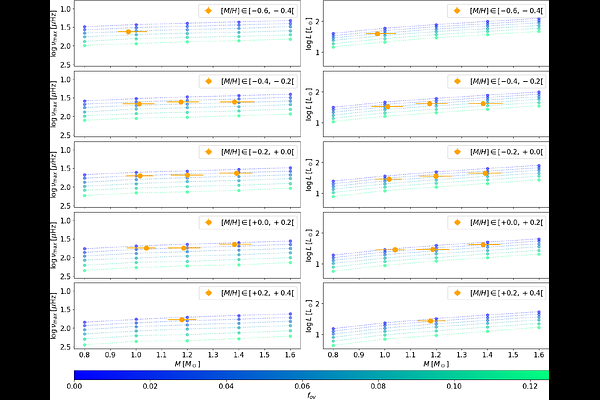Inferring the efficiency of convective-envelope overshooting in Red Giant Branch stars

Inferring the efficiency of convective-envelope overshooting in Red Giant Branch stars
Lorenzo Briganti, Marco Tailo, Edoardo Ceccarelli, Andrea Miglio, Massimiliano Matteuzzi, Alessio Mucciarelli, Alessandro Mazzi, Angela Bragaglia, Saniya Khan
AbstractThe understanding of mixing processes in stars is crucial for improving our knowledge of the chemical abundances in stellar photospheres and of their variation with evolutionary phase. This is fundamental for many astrophysical issues on all scales, ranging from stellar evolution to the chemical composition, formation and evolution of stellar clusters and galaxies. Among these processes, convective-envelope overshooting is in dire need of a systematic calibration and comparison with predictions from multi-dimensional hydrodynamical simulations. The Red Giant Branch bump (RGBb) is an ideal calibrator of overshooting processes, since its luminosity depends on the maximum depth reached by the convective envelope after the first dredge-up. Indeed, a more efficient overshooting produces a discontinuity in the Hydrogen mass fraction profile deeper in the stellar interior and consequently a less luminous RGBb. In this work, we calibrated the overshooting efficiency by comparing the RGBb location predicted by stellar models with observations of stellar clusters with HST and Gaia photometry, as well as solar-like oscillating giants in the Kepler field. We explored the metallicity range between -2.02 dex and +0.35 dex and found overshooting efficiencies ranging from $0.009^{+0.015}_{-0.016}$ to $0.062^{+0.017}_{-0.015}$. In particular, we found that the overshooting efficiency decreases linearly with [M/H], with a slope of $(-0.010\pm0.006)$ dex$^{-1}$. We suggest a possible explanation for this trend, linking it to the efficiency of turbulent entrainment at different metallicities.